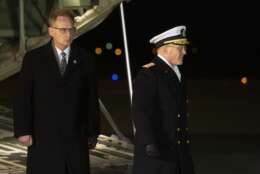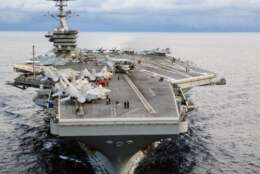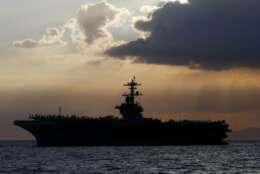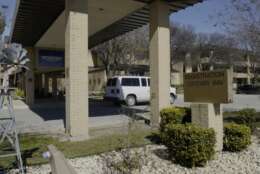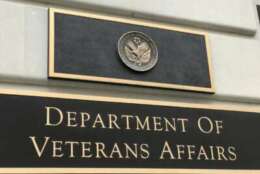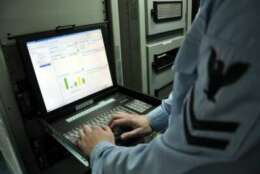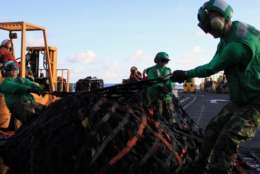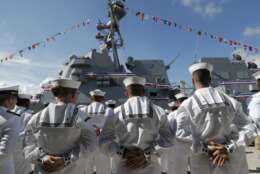Navy
-
Acting Navy Secretary Tom Modly did 180-degree opposite of wise leadership at a crucial moment.
April 08, 2020 -
The acting Navy secretary, Thomas Modly, has resigned after having upbraided the former captain of the coronavirus-stricken USS Theodore Roosevelt
April 07, 2020 -
The captain of a U.S. Navy aircraft carrier facing a growing coronavirus outbreak has been fired
April 03, 2020 -
Resources exist to help feds during natural disasters, and they're mobilizing now to help out during the coronavirus.
April 02, 2020 -
U.S. Navy officials say nearly 3,000 sailors aboard a U.S. aircraft carrier where the coronavirus has spread will be taken off the ship by Friday as military leaders struggle to quarantine crew members in the face of an outbreak
April 02, 2020 -
The Navy says it is now searching for appropriate places in Guam to house the 4,000 crewmembers of the U.S.S. Theodore Roosevelt. The change followed a letter from the ship's commanding officer warning the onboard isolation strategy was "ineffective."
March 31, 2020 -
The crew of the USS Theodore Roosevelt was allowed to disembark for a port visit in Vietnam two weeks ago, but the Navy is unwilling to make a direct connection between that event and the new COVID-19 cases.
March 27, 2020 -
In today's Federal Newscast, military medical facilities are postponing all elective surgeries, invasive procedures and dental procedures due to the response to coronavirus.
March 25, 2020 -
Thousands of troops are stuck waiting until May for their next move.
March 23, 2020 -
The Pentagon's role in responding to the coronavirus outbreak in the U.S. is rapidly expanding, with the likely deployment of Navy hospital ships and Army field hospitals
March 18, 2020 -
When Congress decreed that certain Vietnam War Navy veterans could get help for exposure to Agent Orange, the Department of Veterans Affairs had a challenge.
March 16, 2020 -
The Navy sees the new process, called RAISED, as a "critical enabler" for its ambitions to deploy newly-built software to ships in under 24 hours.
March 12, 2020 -
Naval Supply Systems Command has started implementing a private sector concept — an integrated supply chain control tower — to help eliminate shortages and excess ordering.
March 11, 2020 -
General Dynamics Information Technology, one of the two losing bidders for the largest portion of the NGEN contract, has filed a protest with the Government Accountability Office.
March 05, 2020 -
The U.S. Navy wants to create a naval community college to provide associate's degrees to tens of thousands of young sailors and Marines at no cost to them.
March 02, 2020

